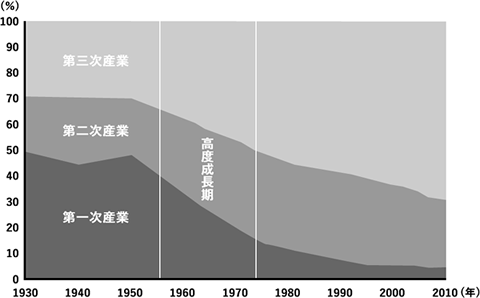Sometimes it just takes one product — one very special product — for a company to make it big. In Apple’s case, the release of the iPod in 2001 helped the company regain its former glory. While making the company hip again, the iPod delivered billions in revenues.
regain:取り戻す
glory:栄光
hip:最新流行の
In the 1980s, with its flagship Macintosh computer, the company was flying high. Yet competition from IBM and low-cost computer makers ate away at Apple’s market share. Later, as cheap PCs running Microsoft’s software became popular, Apple slid even further.
flagship:最も重要なもの
be flying high:好調である
eat away at X:Xをむしばむ
slide:滑り落ちる (slide – slid – slid)
The return of company founder Steve Jobs in the late 1990s was the beginning of 10 Apple’s turnaround. Its new iMac computers became a big hit. Yet that was nothing compared to the success of the tiny iPod.
turnaround:逆転
The first iPod was an easy to use digital music player. It wasn’t a new concept, but the look and features of Apple’s offering made it more attractive than other devices. The first iPod could store 1,000 songs, a huge amount at the time. And its modern design and soft white color turned the music player into a fashion statement.
device:装置、デバイス
fashion statement:流行を示すもの
In the years that followed, the iPod’s popularity grew. Apple released version after version, keeping the product fresh and up-to-date with the newest technology. New features were added over time, including color screens, photo viewing, and the ability to watch videos.
in the years that followed:数年の月日が流れて
fresh:斬新な
up-to-date:最新型の
over time:時がたつにつれて
Apple’s iTunes software made it easy to transfer songs from a computer to an iPod. The company also started selling songs and videos on the Internet, another successful part of the iPod equation. In fact, by January 2008, more than four billion songs had been purchased from the iTunes website.
equation:関連する事柄
The numbers for the iPod are also impressive. In just a few short years, from 2001 to late 2007, more than 150 million iPods were sold. Sales of the product grew to represent more than half of all of Apple’s revenues. In just the first quarter of 2007, that meant $3.4 billion in revenues. Now that is music to a company’s ears.
impressive:印象的な、感銘を与える
represent:代表する
quarter:四半期
music to one’s ears:耳触りのよい、素晴らしい知らせ
